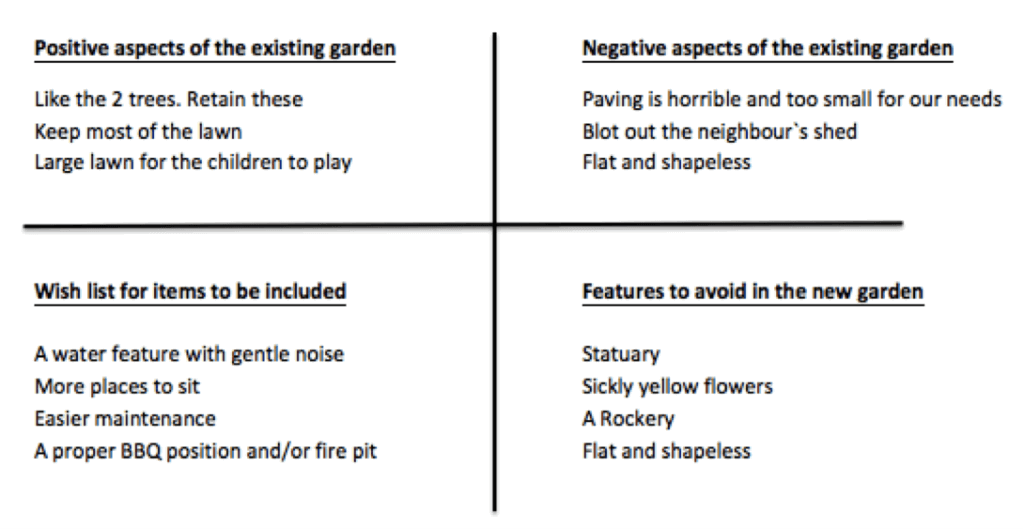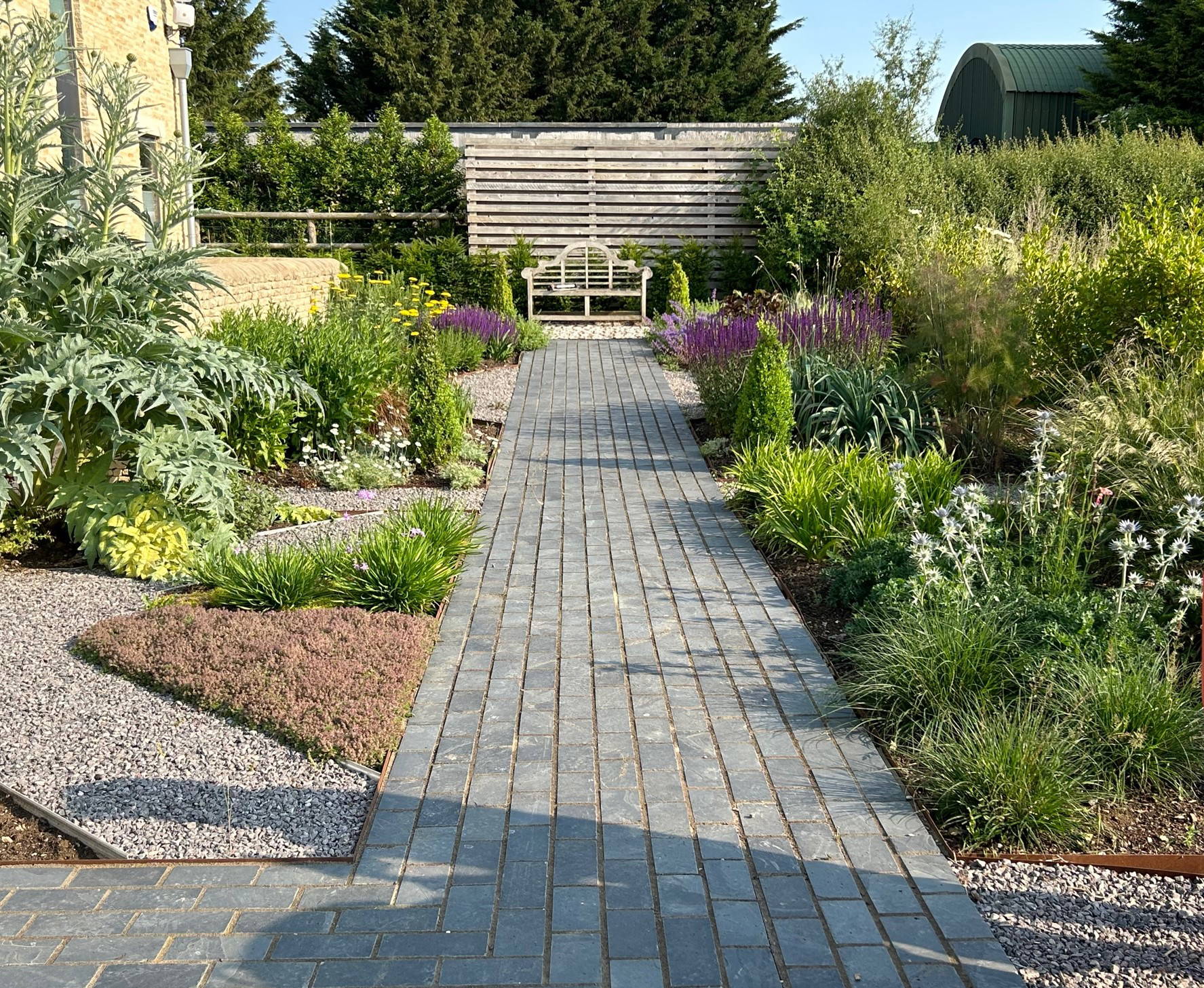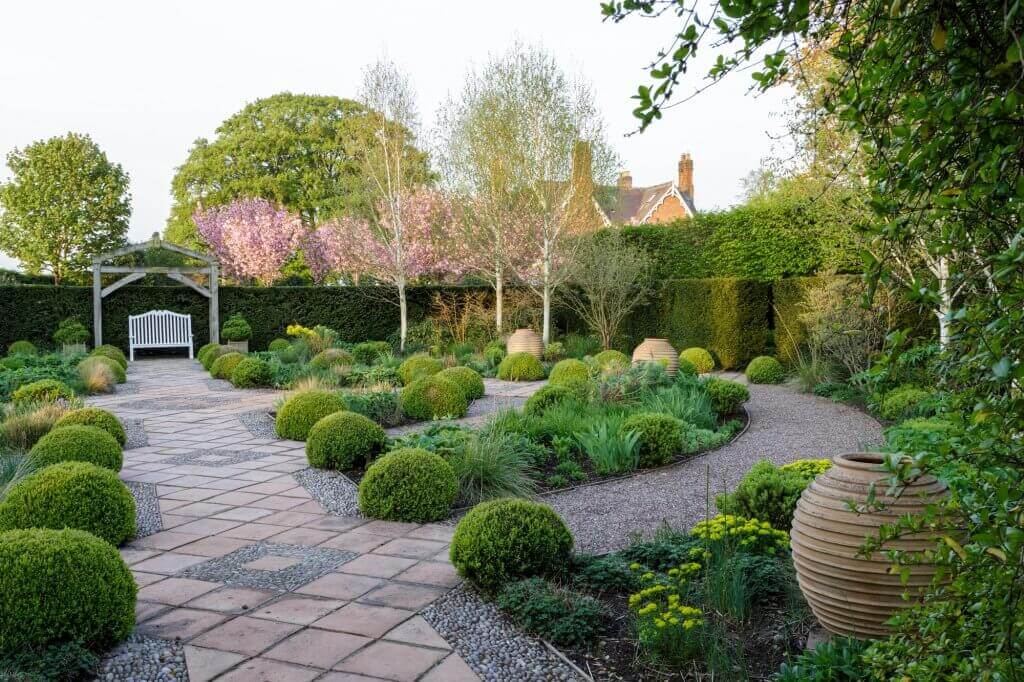If you`ve ever sat down and tried to work out how you can create a contemporary garden design but felt that it`s all too overwhelming, then you are in the right place.
What I`m going to take you through is a simple self help system that will give you the same tools that a professional garden designer uses that will result in a contemporary garden design scheme that you will recognise as your own.
Most of the enquiries we receive at Elementa Design are from clients who have either inherited a layout from the previous owners that doesn`t suit them, or just feel that the garden they might have tinkered with is still lacking in interest, functionality and form. Their priority now is to put this right by engaging a designer to put everything right and introduce that wow factor that shows that a professional has been involved.
It occurred to us recently, after meeting with a new client who said that she wouldn`t know where to start to achieve a contemporary garden design, so we thought we should jot down what we actually do as designers to create these wonderful spaces.
There are of course years of experience, technical construction know how and confidence to produce that wow factor, but you can go a long way down the path of design yourself if you followed these simple steps. So, if you feel like having a go then read on.
Planning Your Contemporary Garden Design
Everything starts with getting a better understanding of what you already have. You`ll have to establish what you can and can`t do in the context of the site you have. Call it site assessment.
Walk round the garden for a couple of minutes taking in a visual brief to remind yourself of those boggy or shady areas that plants struggle in. Are there any areas that might have rubble or old garden features below the soil that need avoiding? Where are the areas of shade or baking sun.
Now, clear the kitchen table, make sure you have a little peace and quiet for an hour or so. Find a large piece of paper. An A3 sketchpad would do but otherwise improvise with the back of some Christmas wrapping paper, or something that gives you plenty of room to experiment. You’ll also need some basic tools such as; a scale rule, a small set square, a pencil and a large eraser. You’ll then need to pace out the garden. Don’t worry at this stage about tape measures, remember that a good long stride is a metre so as long as you get rough proportions correct along with the positions of the doors, windows and other major existing features then that`s good enough for the time being. At this stage only plot the items that are immovable. That’s the practical side of things complete. Now you can do the creative side of things.
The Design Brief
To take the brief I find it helps to take a sheet of paper and put a vertical line down the middle and another line intersecting that to form a cross, or four quadrants as the example below.
You`ll see that there are specific titles in the quadrants; the top half deals with the existing garden and the bottom half gives you an opportunity to list those items that you do or don`t wish to see introduced into your new garden. Be as obvious as you can with your observations of the existing layout. The bottom left hand quadrant should list those items and features that you’d like to see featured in your new garden that aren`t already there. This can be a wish list containing such things as; water, bigger seating area, an additional romantic seating area, BBQ area, more shade, better planting and so on. Conversely, in the bottom right hand quadrant should go all those features and items that you wouldn’t like to see featured in the new garden. This maybe items such as a particular yellow flower, statuary or more pots or containers, more lawn than you already have etc.
The Seating Area in the Garden
Given that sitting in the garden is the most enjoyable and popular pastime for most people, it’s important that the seating area is located in an area that is easily accessible, that it should give you full sun if possible, bearing in mind that it’s easy to create shade over the seating area when required. It has to take precedence of position over everything else. Sizing the seating area paving area is important as when you’ve worked out how many people you’re likely to want to seat at any one time, you then have to work out the size and shape of the table that allow enough room to put chairs around the table and on top of all this. It would be nice to have enough spare room if possible to pass jugs or salad bowls round the back of the chairs.
The Journey or Joining the Dots…
Every contemporary garden design should have a flow, by that I mean if the terrace is near the house then the next feature should draw you to it via a path or strong visual link that takes you to the next position in the garden. Perhaps now it’s time to look at the list of features and garden design ideas that you’d like to see incorporated in your gardens living space.
You may have for instance a swing seat, water feature, hammock or just a small bistro type table and two chairs that you can linger at. I call these areas honeypots as they give you an opportunity to be able to stop, sit and just take it all in. You will also get a different perspective of the garden than you would if sitting on the main terrace from that new position. Perhaps if it is a seating area, although much more low key, you can embed the seating area into some planting so it’s slightly hidden from the main terrace building in a bit of mystery and seclusion.
You can then continue the journey to your next feature from your list. So the idea is to be able to walk round the whole garden, however small to enjoy and sample the various honeypots, perhaps with a cup of coffee or something stronger after work.
Once these features have been placed along the journey route you may end up with a central space that is a void. Depending on the size of the garden then often lawn is allocated to this space and the shape of the lawn is influenced and moulded around the features of the garden. You’ll find then that the interaction between lawn, planting bed force the design to develop a lovely organic flow that upsets the rectangular boundary that we’re all given. You`ll find that if you drop your chin on the drawing you`ll begin to see these shapes interact with each other even on paper. This effect will be so much more dramatic when you walk around the real thing.
Focal points
These are much talked about and they are important. By definition a focal point is a feature or item that draws the eye to a distant point, partially obscured to create mystery in some cases. These can be something as simple as a pot, a tree, decorative boulders or even just a white metal bench in the distance inviting you to go and sit. It needs to send a strong message so choose carefully and make sure it’s large enough to be able to dominate that space so when viewed from a distance it has the proportion to do the job.
Keep it simple
I know it sounds obvious, but the keep it simple rule should be adopted everywhere. If the design of the garden is strong enough it doesn’t need over embellishment. The curves in the garden whether it be gravel or lawn, the shape of the flower beds, keep it bold. Be courageous with fingers of planting beds that come out mid garden creating strong shapes. Big sweeping curves work far better than little wiggles that can also be a nightmare for those having to do the mowing.
The review
Hopefully by now you’ll have the features that you want dotted around your contemporary garden design, some obscured from each other if you have the space and bold profiles defining the margin between planting and the central areas. You`ll see that it then all begins to make sense and with luck you`ll recognise it as something resembling what you wanted to achieve.
You now have two choices: Either produce a fair copy of your sketch and put a little bit more definition and discipline into the design. You could then take your piece of paper out in to the garden on a dry day and mark the positions of the main features with sand or marker paint. You can then `walk through` the new shapes and see how it feels. Begin to select your garden furniture if you’re not using your existing furniture and walk around so that you feel you have enough space on the seating area. Sit at the end of the garden and see how the shapes work there as well.
The most extraordinary and magical process is yet to be enjoyed. The garden that has come from within through this process of design will then be brought to life in front of you and will continue to mature a bring years of enjoyment. There is nothing more magical and satisfying.
Nick Dickinson of Elementa Design has been creating beautiful gardens for four decades now. Nick is a award winning garden designer who is able to take a brief, however sketchy and transform your garden into something that will really stimulate the senses.




